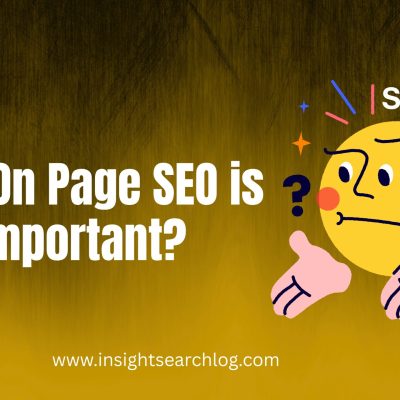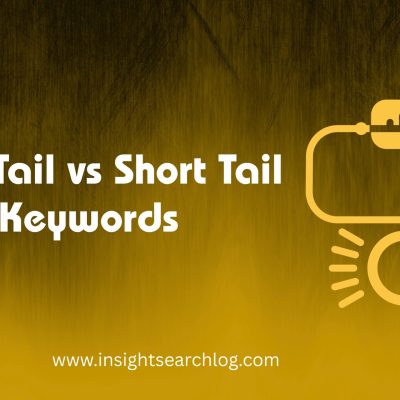What if every word you wrote could pull perfect strangers toward your business, make them feel understood, and gently guide them to say “yes”?
That’s the power – and the necessity – of truly great website content. It’s not just filling pages; it’s building bridges, establishing trust, and turning visitors into loyal fans and customers. Knowing how to write content for a website is arguably the most crucial digital skill you can master today. Forget the fluff and filler. This guide is your deep dive into crafting website content that captivates, converts, and climbs the Google ranks. Let’s make your words work harder than ever before.
Why Your Website Content is Your Silent Sales Superstar (And Why Most Get It Wrong)
Think of your website as your 24/7 salesperson, storefront, and customer service hub rolled into one. Now, imagine that representative mumbling jargon, talking only about themselves, or giving confusing directions. Disaster, right? Yet, that’s what poorly written website content does every single day.
Great website content does the opposite:
- Builds Instant Trust & Credibility: Clear, helpful content signals you know your stuff (Expertise) and have good intentions (Authoritativeness and Trustworthiness – Google’s E.A.T. loves this!).
- Speaks Directly to Your Dream Customer: It answers their burning questions, addresses their pains, and speaks their language. This builds a powerful connection.
- Guides Visitors Effortlessly: Like a friendly map, good content shows visitors exactly where to go next (hello, effective Call to Action!).
- Converts Browsers into Buyers (or Subscribers, or Leads): It persuades by demonstrating value and removing objections.
- Scores Big with Search Engines: Optimized content helps Google understand your pages and match them with what people are searching for (SEO Content).
Most websites miss the mark because they focus on themselves (“We’re the best! Look at our awards!”) instead of their visitor. We’re flipping that script today.
The Core Principles: Writing Website Content That Resonates
Before diving into the step-by-step process, let’s lock down the foundational mindset you must adopt:
- Know Thy Audience (Intimately): This isn’t demographics 101. What keeps them up at night? What words do they use to describe their problems? What are their secret hopes and fears related to your solution? Create detailed buyer personas. Talk to real customers!
- Clarity is King (and Queen): Avoid jargon, complex sentences, and fluffy language. Get to the point quickly and simply. If a 12-year-old couldn’t understand the gist, simplify.
- Focus on Benefits, Not Just Features: No one cares that your software has “advanced algorithmic processing.” They care that it “saves them 10 hours a week on tedious tasks.” Benefits answer the “So what?” for the user.
- Solve Problems, Don’t Just Sell: Your primary goal is to be helpful. Address pain points directly. Provide genuine value before asking for anything. Build the know-like-trust factor.
- Establish Your Unique Voice & Tone: Are you friendly and casual? Authoritative and professional? Witty and irreverent? Your voice and tone should be consistent across your site and reflect your brand personality. This builds recognition and connection.
- Prioritize Scannability: Online readers scan. Use headings, subheadings, short paragraphs, bullet points, and bold text strategically to break up walls of text and highlight key takeaways.
Your Step-by-Step Blueprint: How to Write Content for a Website
Okay, let’s get tactical. Here’s your actionable roadmap:
Phase 1: Deep Dive Research & Planning
- Define Your Goal for Each Page: What specific action do you want the visitor to take? (e.g., Buy now, Sign up, Download a guide, Contact sales). Every piece of content should serve a clear goal.
- Understand Your Audience (Yes, Again – It’s That Critical):
- Persona Power: Revisit or create your buyer personas. Give them names, jobs, goals, frustrations, and preferred communication styles.
- Keyword Research: What terms are your ideal customers actually typing into Google? Use tools like Google Keyword Planner, SEMrush, Ahrefs, or even AnswerThePublic to find relevant keywords and search intent (Are they looking to buy, learn, or find a specific site?).
- Listen & Learn: Read forums (Reddit, niche communities), check Q&A sites (Quora), and analyze customer support tickets or reviews. What language do they use? What questions keep popping up? Struggling to decode your audience’s voice? 🔍 eMInd Institute’s Content Writing Course teaches you to systematically mine insights from real conversations—turning raw feedback into content gold. Stop guessing; start knowing. Explore eMInd’s Course Now! ✅
- Know Your Competition: Analyze competitor websites in your niche.
- What topics do they cover?
- What’s their content angle? (Are they super technical, very price-focused, heavy on storytelling?)
- What gaps can you fill? Can you provide more depth, better clarity, a unique perspective, or simply more up-to-date information?
- Conduct a Content Audit (If You Have Existing Content):
- What’s performing well (traffic, engagement, conversions)?
- What’s outdated or underperforming?
- Are there content gaps where important topics aren’t covered?
- Is the voice and tone consistent?
- Map Keywords to Pages & Define Structure:
- Assign primary and secondary keywords to each planned page.
- Sketch a rough outline for each page using headings (H2s, H3s, H4s) that logically flow and incorporate keywords naturally. Think about the user’s journey through the page.
Phase 2: Crafting Compelling Content
- Hook ‘Em Fast (The Headline & Intro):
- Headline: Promise a clear benefit, spark curiosity, or address a pain point directly. Use power words. Test different versions! (e.g., “Stop Wasting Money on Ads: How to Write Content for a Website That Attracts Customers Naturally” vs. “Website Content Writing Guide”).
- Introduction (First Paragraph): Acknowledge the reader’s problem or desire immediately. Show empathy. State the core promise of the article clearly (and include your focus keyword naturally!). Example: “Staring at a blank screen, wondering how to write content for a website that actually gets results? You’re not alone. Most businesses pour time and money into pages that fall flat. This guide cuts through the noise, giving you the exact steps to create website content that connects, convinces, and converts – starting today.”
- Structure for Success (Using Headings & Sections):
- H1: The main page title (usually your compelling headline).
- H2s: Major sections breaking down the main topic (e.g., “Phase 1: Deep Dive Research & Planning,” “Crafting Irresistible Product Pages,” “SEO Essentials for Your Content”).
- H3s & H4s: Subsections within each H2, providing finer detail and organization (e.g., under “Research,” you might have H3: “Understanding Your Audience,” H4: “Creating Detailed Buyer Personas,” H4: “Conducting Effective Keyword Research”).
- Keep paragraphs short (2-4 sentences max). Walls of text are intimidating online.
- Write Conversationally (Talk, Don’t Preach):
- Use “you” and “your” frequently. Address the reader directly.
- Use contractions (we’re, you’ll, it’s). It sounds more natural.
- Ask rhetorical questions. (“Sound familiar?”, “Want to know the secret?”)
- Use simple, everyday language. Explain complex ideas clearly.
- Provide Immense Value (Go Deep!):
- Examples, Examples, Examples: Don’t just say “be clear,” show it! Provide before-and-after snippets. Show how you transformed a feature into a benefit.
- Step-by-Step Instructions: Break down processes. “Step 1: Open Google Analytics. Step 2: Navigate to Acquisition > All Traffic > Channels…”
- Actionable Tips: Give readers things they can implement immediately.
- Data & Insights (Where Relevant): Back up claims with stats or credible sources. It boosts authority.
- Address Objections: Anticipate and counter common reasons someone might hesitate. (“You might think this takes too long, but here’s how to streamline it…”)
- Incorporate SEO Naturally:
- Primary Keyword: Use it in the H1, early in the first paragraph, in at least one H2 heading, and naturally sprinkled throughout the body text.
- LSI Keywords: These are semantically related terms. Bold them naturally within your text (e.g., website copy, content strategy, target audience, SEO writing, content creation, user intent, voice and tone, call to action, content audit, keyword research, content marketing, blog post, landing page, content optimization, readability, conversion rate). Don’t force them; let them flow.
- Image Alt Text: Describe images concisely, including keywords if relevant (e.g., alt=”step-by-step guide on how to write content for a website”).
- Internal Linking: Link to other relevant pages on your website using descriptive anchor text (e.g., “Learn more about creating effective buyer personas here” instead of “Click here”).
- Meta Description: Write a compelling 150-160 character summary for search results, including your primary keyword. This is your ad copy!
- Craft Powerful Calls to Action (CTAs): Tell the reader exactly what to do next. Make it clear, compelling, and benefit-oriented.
- Weak: “Submit.”
- Strong: “Download Your Free Website Content Checklist Now!” or “Start Your Risk-Free Trial Today!” or “Get Your Custom Content Plan.”
- Place CTAs Strategically: At the end of major sections, within relevant content, and prominently at the end of the page.
Feeling inspired but short on time (or wordsmithing skills)? Let our team of expert website content writers craft high-converting, SEO-optimized pages that truly speak to your audience. Get a free content audit and quote today! [Link to your services page]
Phase 3: Polishing to Perfection
- Edit Ruthlessly: Cut fluff, jargon, and redundancy. Ensure every sentence serves a purpose.
- Proofread Meticulously: Typos and grammatical errors destroy credibility. Read aloud, use tools like Grammarly or Hemingway Editor, and get a second pair of eyes.
- Check Readability: Aim for a grade level around 8-10 for most audiences. Tools like Hemingway Editor help assess this.
- Optimize for Visuals:
- Break up text with relevant, high-quality images, screenshots, infographics, or videos.
- Ensure images are optimized for web (compressed file size).
- Use captions effectively.
- Mobile-First Check: How does the content look and read on a smartphone? Is it still scannable? Are buttons easy to tap?
- SEO Final Check: Verify keyword placement, heading structure, meta description, image alt text, and internal links.
Mastering Different Page Types
While the core principles apply, different website pages have specific nuances:
- Homepage: Your virtual front door. Focus on clear value proposition, immediate understanding of what you do/offer, strong navigation, and a primary CTA. Establish trust quickly (testimonials, logos).
- About Page: Builds connection and trust. Tell your story authentically, showcase your values and mission, introduce your team (humanize the brand!), and subtly reinforce why someone should choose you. Focus on authenticity.
- Product/Service Pages: These are your salespeople. Lead with the core benefit. Clearly explain features translated into customer benefits. Address key objections. Use compelling visuals. Include strong, clear CTAs (“Buy Now,” “Schedule Demo,” “Get Pricing”).
- Blog Posts: Primarily for content marketing, education, and SEO. Provide deep value on specific topics. Use engaging headlines. Structure well with headings. End with a relevant CTA (e.g., subscribe, download a related resource, read a related post).
- Landing Pages: Designed for a single, specific conversion goal (e.g., sign up, download, register). Minimize distractions (navigation links away!). Focus entirely on the value of the offer and the conversion. Benefit-driven headlines and CTAs are crucial.
SEO Essentials: Making Google Love Your Content
Writing for humans first is paramount, but understanding SEO basics ensures your great content gets found:
- Keyword Intent is Paramount: Match your content to what the searcher actually wants. Are they looking to buy (“best running shoes for flat feet”), learn (“how to train for a 5k”), or find a site (“Nike official store”)? Your content must satisfy that intent.
- Comprehensive Content (Topic Clusters): Cover topics thoroughly. Google favors in-depth content that serves as a one-stop resource. Consider creating pillar pages (broad overview) supported by cluster content (detailed subtopics).
- Technical SEO Foundation: Ensure your site is crawlable and indexable (good site structure, XML sitemap, no major crawl errors). Page speed matters significantly for user experience and ranking.
- Authoritative Backlinks: High-quality websites linking to your content signals trust to Google. Earn these through creating truly exceptional, shareable content (link-worthy content).
- User Experience (UX) Signals: How long do people stay on your page (dwell time)? Do they bounce quickly? Do they visit other pages? Google uses these as indicators of content quality and relevance. Readability and scannability directly impact this.
Common Website Content Mistakes to Avoid Like the Plague
- Writing for Yourself, Not Your Audience: Focusing on your company history, awards, or internal jargon instead of solving the visitor’s problems.
- Being Too Vague or Generic: Failing to provide specific, actionable value. Using clichés and fluffy language.
- Ignoring SEO Completely (or Over-Optimizing): Stuffing keywords unnaturally is just as bad as not using them at all. Write naturally first, then optimize.
- Weak or Missing Calls to Action: Leaving visitors wondering what to do next. Don’t make them guess!
- Poor Structure & Readability: Giant blocks of text, no headings, complex sentences. Instant bounce trigger.
- Outdated Information: Failing to review and update content regularly. Damages credibility and SEO.
- Forgetting Mobile Users: Not optimizing the reading experience for smaller screens.
- Skipping the Proofread: Typos scream unprofessionalism.
Struggling to avoid these pitfalls? Our proven website content framework ensures clarity, compelling CTAs, and SEO power on every page. Discover how we can transform your website’s voice and results. [Link to your services/contact page]
Beyond the Publish Button: Content is a Living Thing
Writing website content isn’t a “one and done” task. To keep it effective and ranking:
- Track Performance: Use Google Analytics and Google Search Console. Monitor traffic, keyword rankings, bounce rates, time on page, and conversion rates for key pages.
- Update & Refresh: Regularly review older content. Update statistics, refresh examples, add new insights, improve sections based on performance data or new keywords. Content repurposing (turning a blog post into a video, infographic, or social snippets) extends its reach.
- Promote Your Content: Don’t just publish and pray. Share it on relevant social channels, include it in newsletters, consider outreach for potential backlinks.
Conclusion: Your Words, Your Website, Your Wins
Learning how to write content for a website is about mastering the art of connection. It’s about understanding the human on the other side of the screen so deeply that your words feel like a conversation. It’s about blending empathy, clarity, value, and strategy into every paragraph, heading, and call to action.
It takes effort. It takes research. It takes practice. But the payoff? A website that doesn’t just exist, but actively works for you – attracting the right people, building genuine trust, and driving meaningful results. Stop letting your website be a digital brochure. Start making it your most powerful asset.
Ready to put these strategies into action? Pick one page on your website right now – maybe your homepage or a key service page. Apply just one principle from this guide: rewrite a headline for clarity and benefit, add a stronger CTA, or break up a dense paragraph. See the difference it makes!
Looking for more deep dives? I’ve poured everything into this guide on how to write content for a website, but if you’re hungry for more, let me know which of these topics you’d like to see covered next, and I’ll link them here as soon as they’re live:
- Effective Keyword Research Techniques for Improved Organic SEO Traffic
- The Ultimate Guide to SEO Content Optimization (Beyond Basics)
- 7 Website Copywriting Formulas That Convert Like Crazy
- Content Repurposing Magic: How to Get 10x from Every Piece You Create
- Building a Content Strategy That Actually Drives Business Growth
I’ve written this article to give you full value, but if you’re interested in more, let me know which of these topics you want next and I’ll link them here as soon as I publish them! Just drop your request in the comments below. Happy writing!





